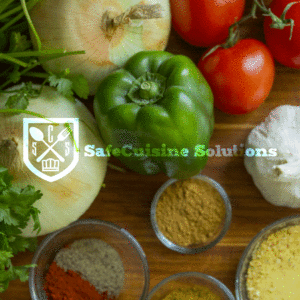
Proper food storage is not only essential for preserving the freshness and quality of ingredients but also crucial for ensuring the safety of your culinary creations. The way food is stored significantly impacts its shelf life and the risk of foodborne illnesses. In this blog post, we will explore the importance of maintaining proper food storage practices in your culinary establishment to uphold freshness, minimize waste, and prioritize the safety of your customers.
The Significance of Proper Food Storage: Effective food storage is a critical aspect of maintaining the quality, flavor, and nutritional value of ingredients. It helps to prevent spoilage, preserve freshness, and extend the shelf life of perishable items. Equally important, proper food storage plays a fundamental role in minimizing the risk of foodborne illnesses caused by harmful bacteria, viruses, and other contaminants. By implementing correct storage practices, you ensure that your customers enjoy safe and enjoyable dining experiences.
Guidelines for Maintaining Proper Food Storage:
- Temperature Control: Temperature control is paramount in maintaining food safety and quality. Refrigeration and freezing are two primary methods of preserving perishable items. Ensure that your refrigerators and freezers are set to the recommended temperatures: refrigerators below 41°F (5°C) and freezers at 0°F (-18°C) or below. Regularly monitor and record temperatures using temperature monitoring devices to verify that the desired temperature ranges are consistently maintained.
- First-In, First-Out (FIFO) Method: Implement the FIFO method for inventory rotation. This means using older products before newer ones to minimize waste and ensure that items are used before their expiration dates. Proper labeling and organization of products play a crucial role in facilitating the FIFO method. Clearly mark dates on items, rotate stock regularly, and discard any expired or spoiled items promptly.
- Proper Packaging and Sealing: Adequate packaging and sealing are essential to protect food from contamination, prevent moisture loss, and maintain freshness. Utilize airtight containers, food-grade bags, or vacuum-sealing techniques to safeguard perishable items. Ensure that packaging materials are in good condition, free from leaks, and labeled with necessary information such as product name, date, and any special handling instructions.
- Separation of Raw and Ready-to-Eat Foods: Prevent cross-contamination by strictly separating raw meats, poultry, seafood, and eggs from ready-to-eat foods such as fruits, vegetables, and cooked items. Use separate containers, shelves, or storage areas to avoid any contact between raw and cooked foods. This practice reduces the risk of harmful bacteria transfer and minimizes the potential for foodborne illnesses.
- Storage Area Organization and Cleanliness: Maintain a well-organized and clean storage area to facilitate proper food storage. Regularly clean shelves, storage containers, and other equipment to prevent the accumulation of dirt, debris, or potential contaminants. Keep storage areas dry, well-ventilated, and free from pests to ensure the highest standards of food safety.
Proper food storage practices are vital for maintaining freshness, minimizing waste, and prioritizing the safety of your customers. By following guidelines such as temperature control, implementing the FIFO method, ensuring proper packaging and sealing, separating raw and ready-to-eat foods, and maintaining an organized storage area, you can significantly reduce the risk of foodborne illnesses and extend the shelf life of ingredients.
At your culinary establishment, make proper food storage an integral part of your food safety protocols. By doing so, you not only enhance the quality and safety of your culinary creations but also demonstrate your commitment to excellence and customer satisfaction.
For further guidance and support in implementing effective food storage practices, SafeCuisine Solutions is here to assist you. Stay tuned for more informative articles and resources on food safety to help you elevate your culinary establishment to new heights of success while ensuring freshness, safety, and satisfaction for all.

